In the Central District
Mamaev Kurgan Historical-Memorial Complex to Heroes of the Battle of Stalingrad
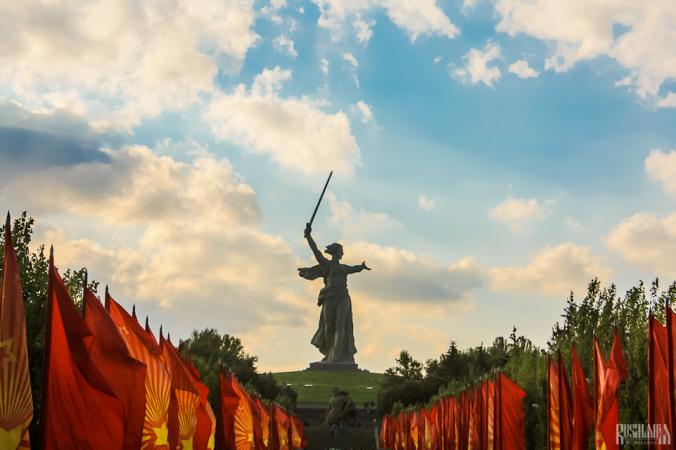
Mamaev Kurgan was originally a Tatar burial mound ('kurgan'), although historians consider it is unlikely that it is the burial place of the Mongol-Tatar military commander Mamaev, even though legends and theories often claim the contrary. During the Second World War, the hill was marked on maps as 'Height 102.0' and became known as the Main Height of Russia. It was viciously fought over due to the strategic position it held and changed hands many times, its capture by Soviet forces on 2 February 1943 finally ended the Battle of Stalingrad. Upon the end of the battle, Mamaev Kurgan had been ploughed up by bombs and its soil mixed with shrapnel and corpses. It is impossible to know the exact figure but according to estimates, at least 34,000 soldiers are buried there. Now it is the location of the Mamaev Kurgan Historical-Memorial Complex to Heroes of the Battle of Stalingrad and is certainly Volgograd's main sight and probably even one of the most impressive sights in Russia.
The main focus of the complex is undoubtedly the Mother-Russia Calls Statue at the summit of the hill. The statue depicts an emotional Mother-Russia shouting and stepping forward whilst wielding a giant sword. The spectacular monument is of course the centre piece of the memorial complex, but there are many other monuments on the way through the complex worth seeing.
Remembrance of Generations Monument
Outside the complex is the first monument - the Remembrance of Generations monument - which is a giant stone relief depicting a line of people mourning and carrying wreaths and banners in remembrance of those who fell. Next to this are the ten-metre wide steps, 200 hundred of them to represent each day of the battle. These steps leads to the Alley of Poplar Trees. From here you can enjoy great views of Mother-Russia surrounded by the beautiful poplar trees.
Standing to the Death Statue
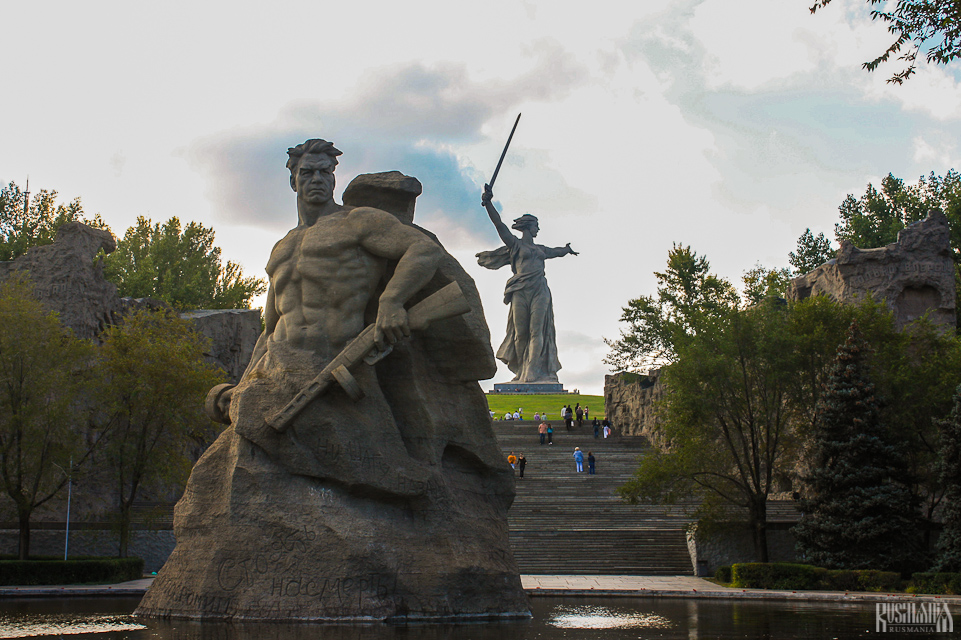
Further up in the complex you reach Standing to the Death Square which is marked by the Standing to the Death Statue which depicts a perfect Soviet soldier, bare-chested, holding a machine gun and about to throw a grenade. The statue symbolised the most difficult period of the battle and the heroism of the Soviet soldiers who faced a ferocious enemy. It stand at 16.5 metres, but is of course dwarfed by Mother-Russia in the background.
Ruined Walls Monument
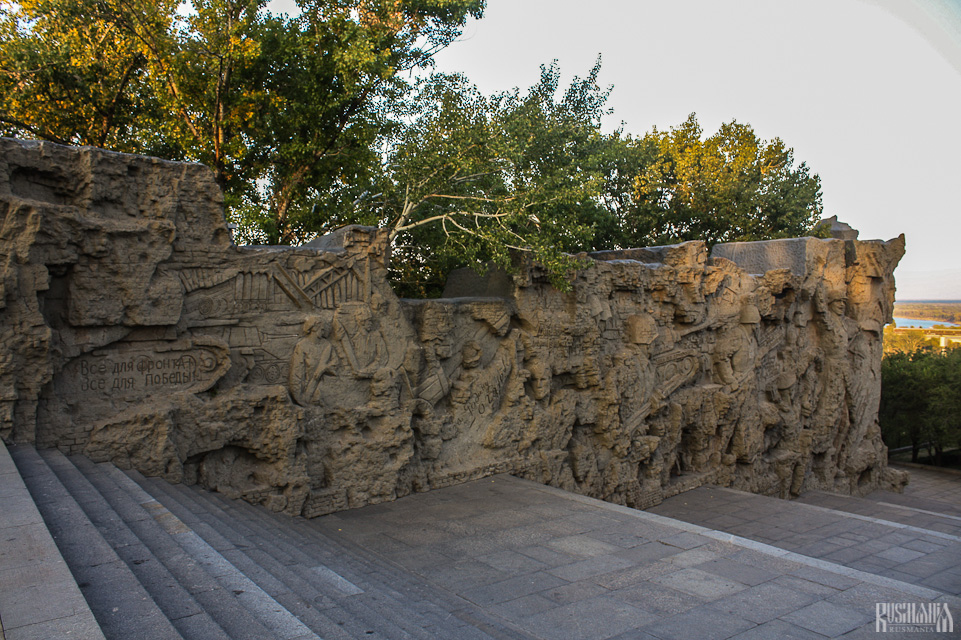
From Standing to the Death Square you pass up stairs surrounded by the Ruined Walls monument. The giant 46 metre-high walls are ruined to show the destruction of the battle. On them there are many reliefs showing stages of the battle. Stirring Soviet war songs are played on speakers as you pass between the walls to Heroes Square.
Heroes Square
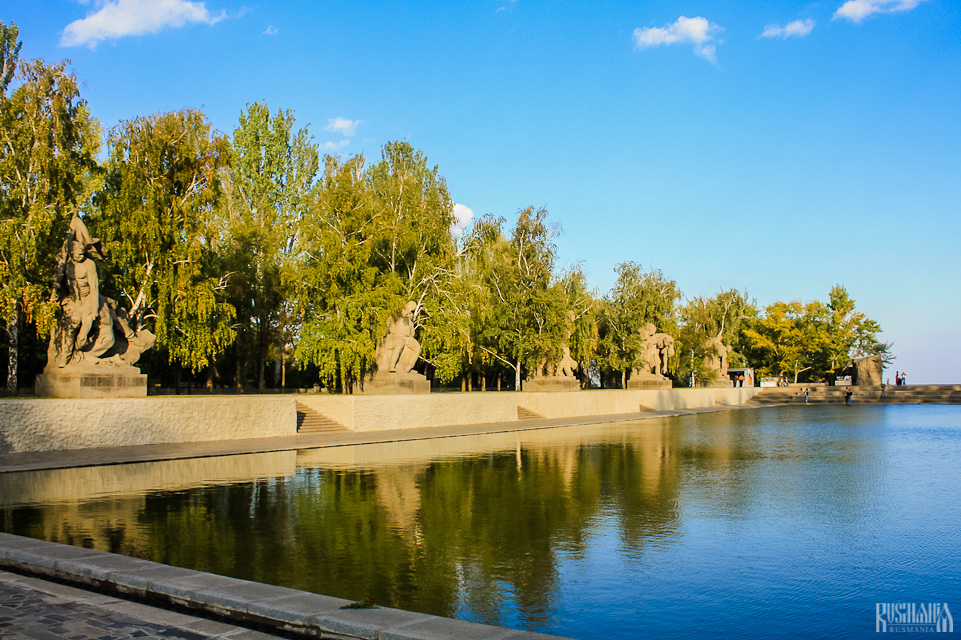
Heroes Square is marked by a pool which represents the river Volga and water as a source of life in general. The pool is surrounded by six six-metre high statues of various soldiers and their heroic deeds. Again this part of the complex offers amazing views of Mother-Russia especially when she is reflected in the still water of the pool.
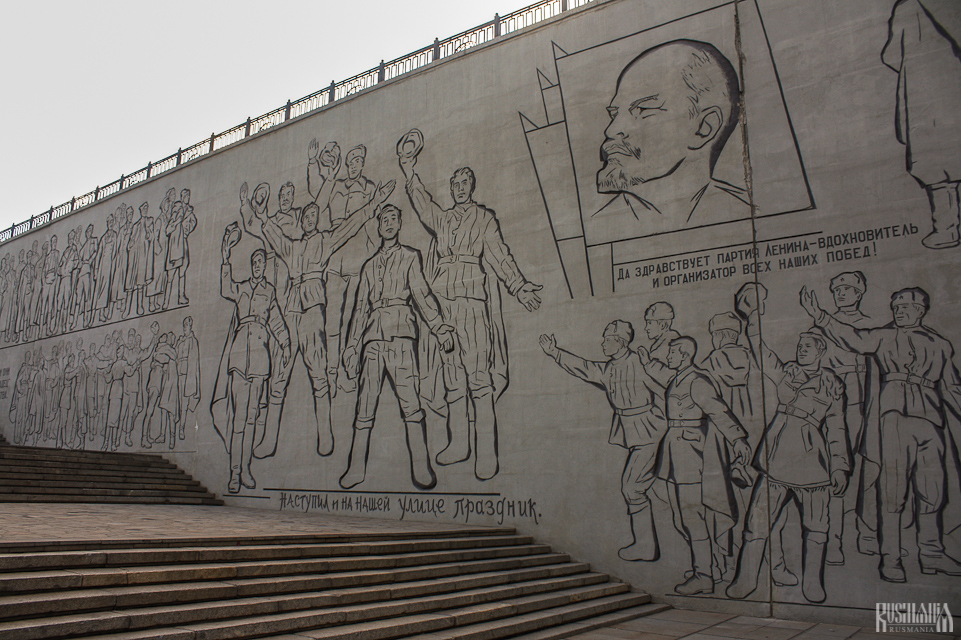
On the other side of Heroes Square is the Monumental Relief, which shows the celebration and jubilation upon the defeat of Nazi Germany. Within the wall, a time capsule has been place to be opened on 9 May 2045 - 100 years since the end of the Second World War.
Hall of Military Glory

From Heroes Square, you walk through a passage in the relief into the Hall of Military Glory up to the upper part of the complex. The hall is, as expected, spectacular and its walls are marked with the names of over 7,000 soldiers who fell at the Battle of Stalingrad. In the centre of the hall there is a giant hand reaching out from the ground holding a burning torch which is eternally lit. The monument is surrounded by wreathes and soldiers on guard. Soldiers who have been relieved of duty slowly goosestep their way out of the hall along the path along the edge of the walls out of the hall.
Mourning Square
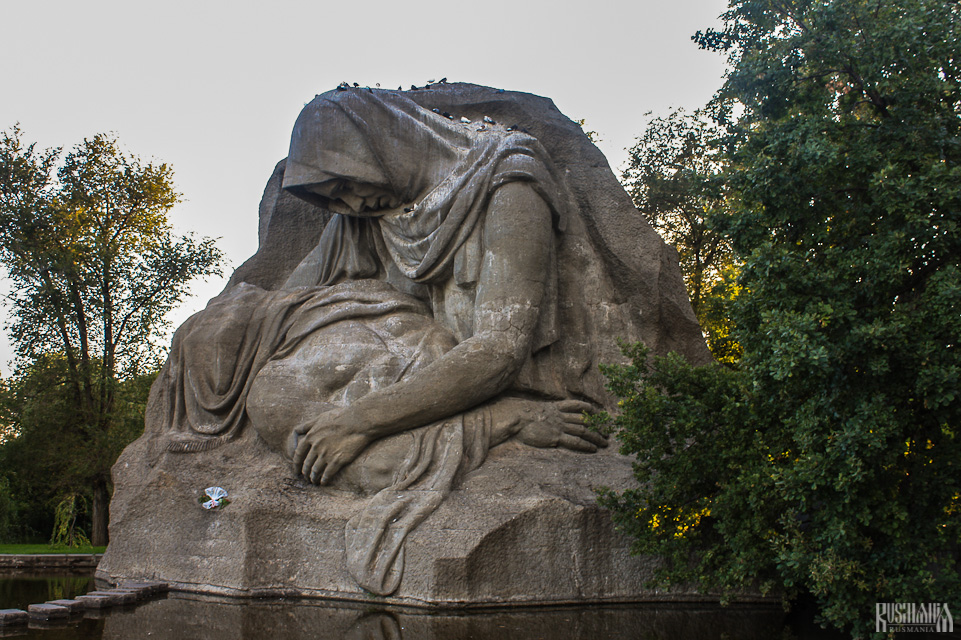
Upon leaving the hall you reach Mourning Square and are immediately greeted with an enormous statue of a weeping mother mourning her dead son in her arms. Behind the statue stands the golden domed All-Saints Cathedral which was added to the complex in 2002.
Mother-Russia Calls Monument
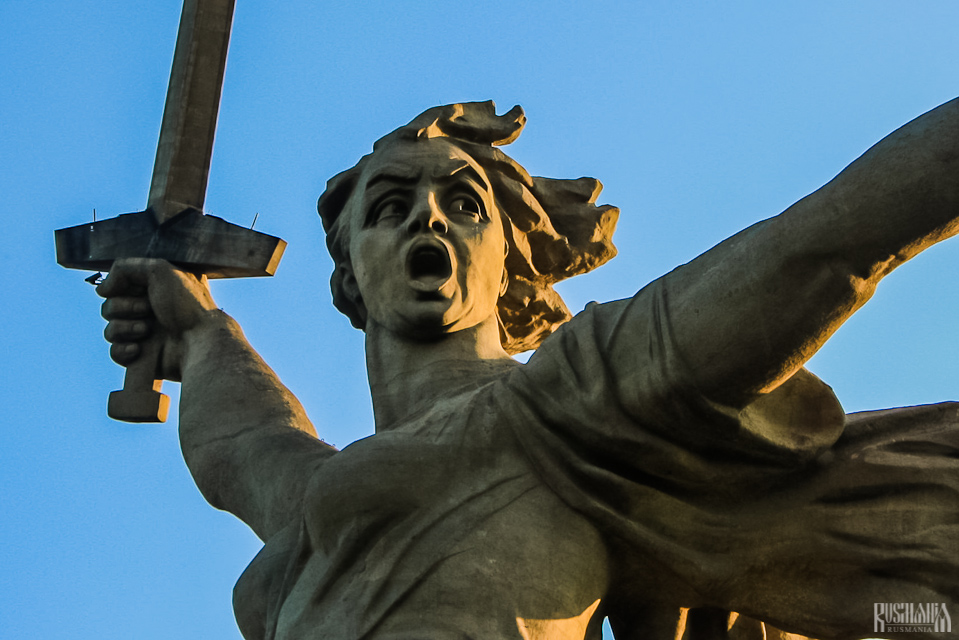
Finally you reach the base of one of the world's best statues which deserves to be as iconic and New York's Statue of Liberty or Rio De Janeiro's Christ the Redeemer Statue - yet is not that well-known outside the former Soviet Union. But when Mother-Russia is towering above you, you realise how incredible and awe-inspiring the statue is. Particularly effective is the expression on Mother-Russia's face - a demonstration of real fury as she is calling her subjects to war and the desperation of the situation which the country faced at the time.
The statue of Mother-Russia herself alone stands at 52 metres and weighs over 8,000 tonnes, if you include the 33 metre-long sword, the statue's overall height is 85 metres. As a comparison, the Statue of Liberty in New York is 43 metres on a 47-metre pedestal and the Christ the Redeemer Statue in Rio de Janeiro is a mere 30 metres high. Add to this the 102 metres of the hill itself and you have a truly impressive monument, which is a fitting tribute to the heroes who suffered and lost their lives in this awful battle.
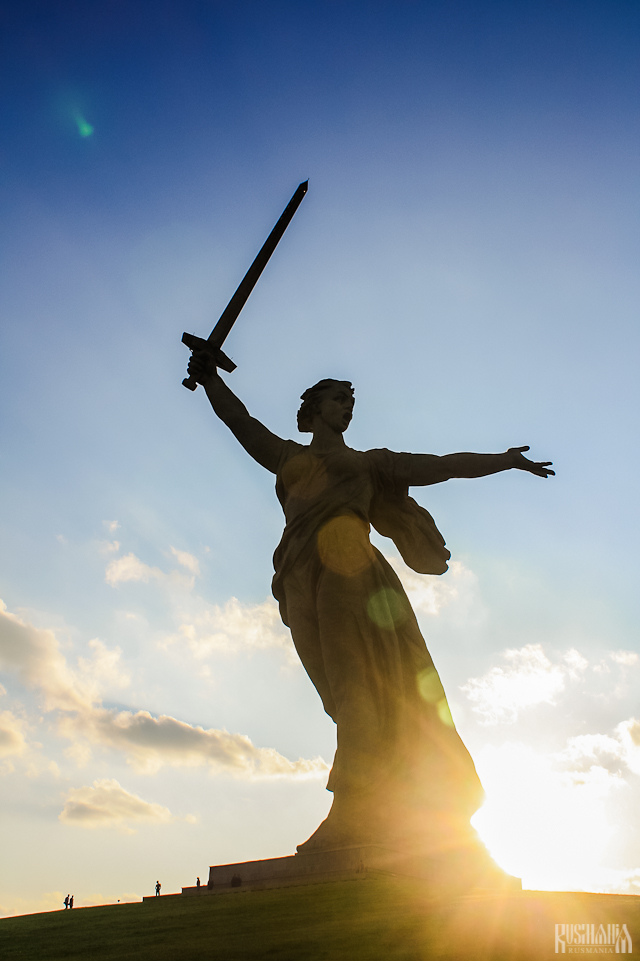
The statue was unveiled in 1967 and is the work of sculptor Yevgeny Vuchetich and structural engineer Nikolai Nikitin. It is said that the sculptor was partly inspired by the Winged Victory of Samothrace and there is certainly some similarity between the statues. During the construction 5,500 tonnes of concrete and 2,400 tonnes of metal structures were used. There is even an urban myth that one of the workers got lost inside the statue during its construction, never to be found again.
The statue represents part of a trilogy of statues by sculptor Yevgeny Vuchetich. The first is the 'Homefront to the Motherland' statue in Magnitogorsk and depicts worker constructing a huge sword, the Volgograd statue represents the second in the series as Mother-Russia has lifted the sword calling Russians to war and the third and final statue is the Soldier-Liberator in Berlin's Soviet War Memorial in Treptower Park, who has finally lowered the sword upon defeating the enemy.
| Location | Mamaev Kurgan, Prospekt Lenina |
|---|---|
| Metrotram | Mamaev Kurgan |

 History
History